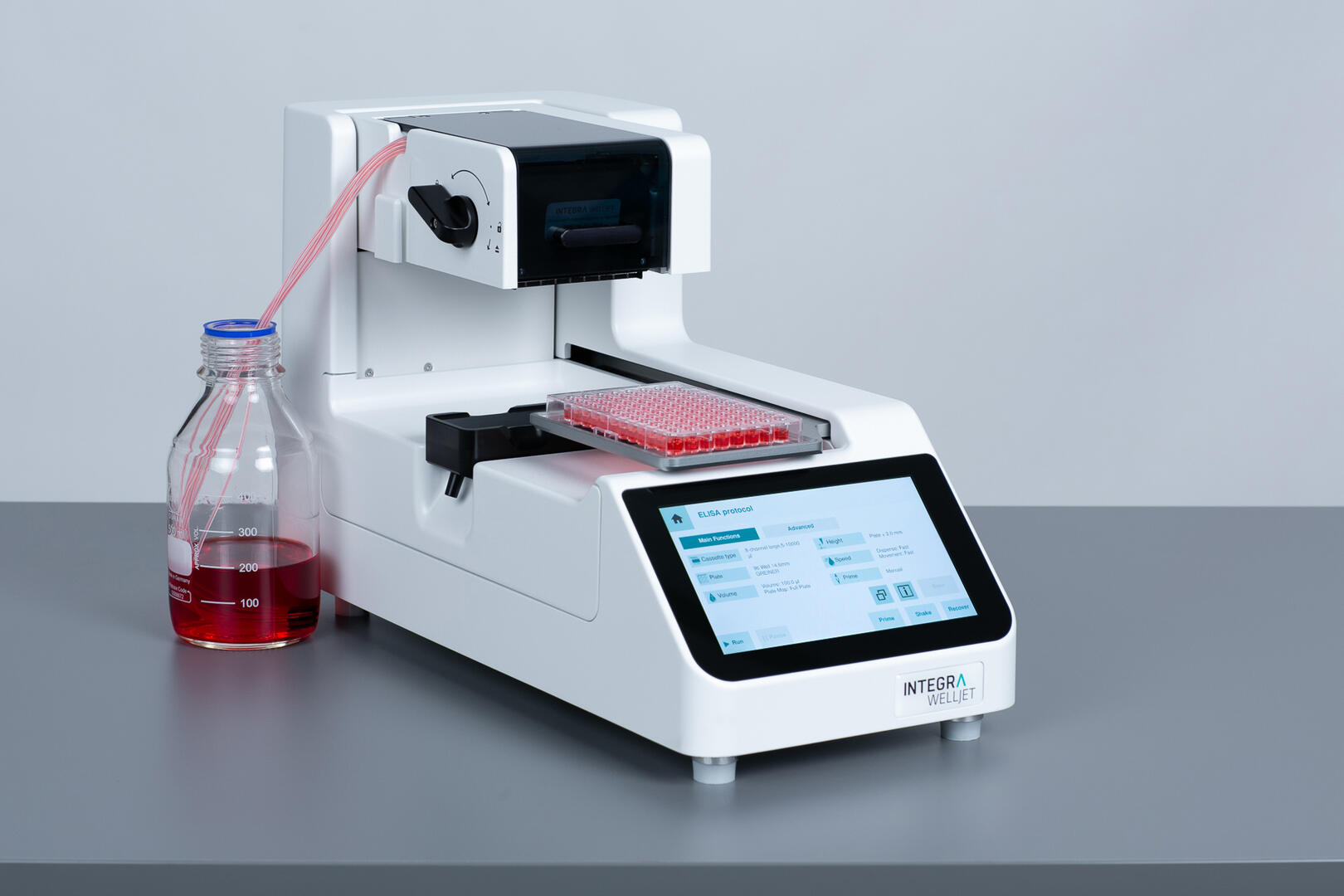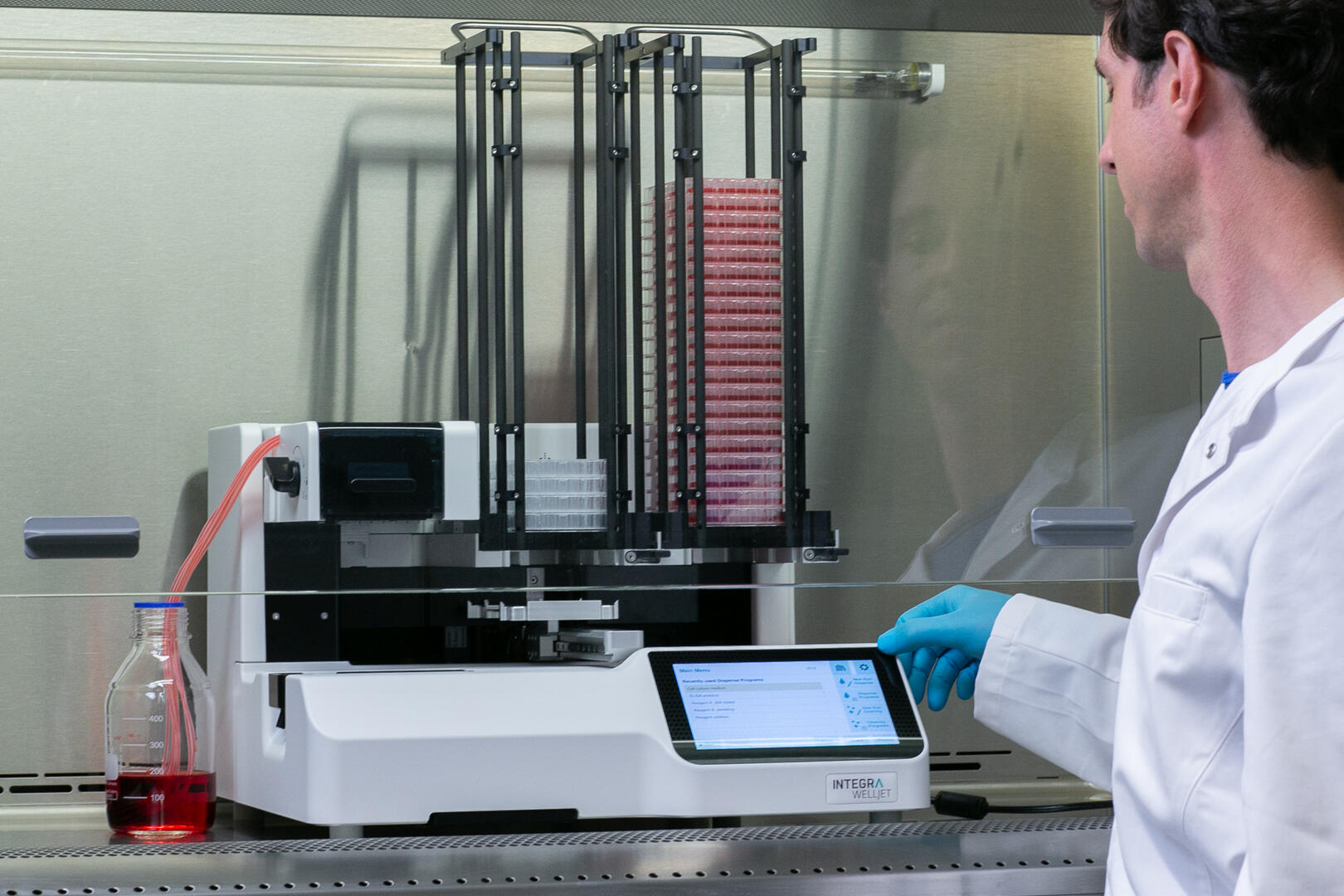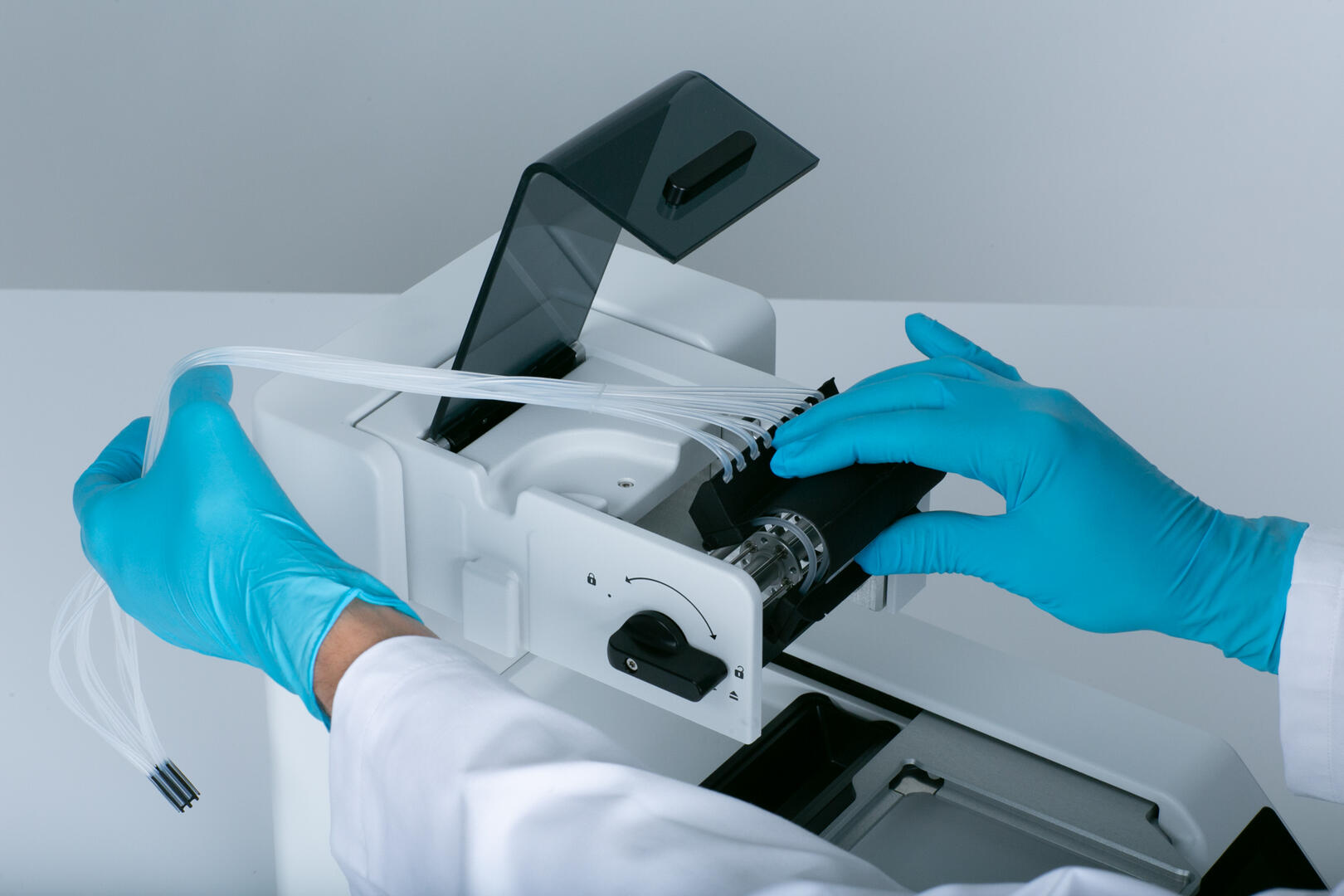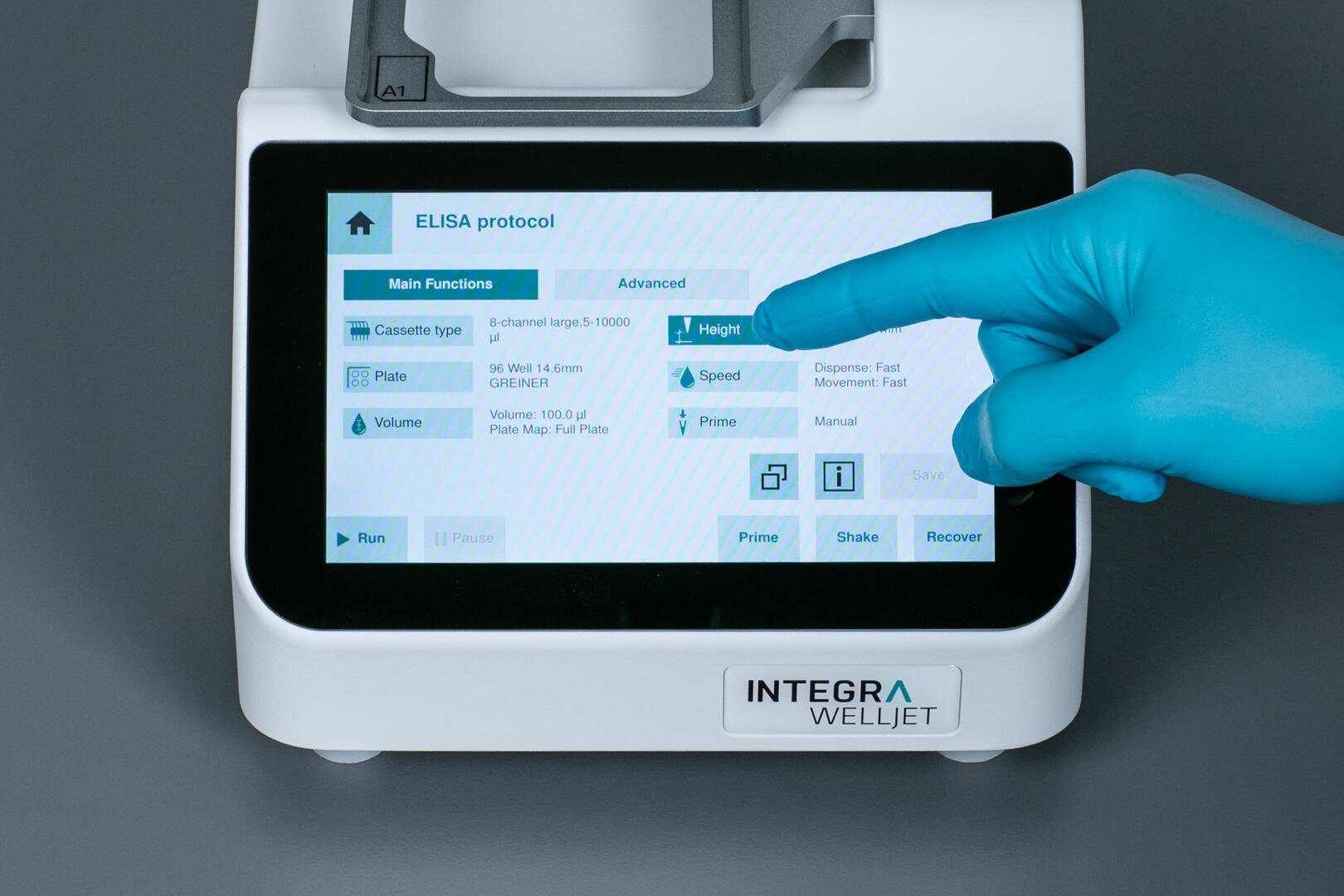Top instrument considerations for an MTT assay
The MTT assay steps are straightforward, but scientists have struggled with the technique’s reproducibility.1 MTT assays involve multiple cell and reagent dispensing steps that can quickly compound with increasing multiwell plates, potentially introducing inaccuracies and experimental variability. Additionally, while the MTT assay is safer than other cell viability assays that use radioactive or intercalating agents, MTT can become toxic to cells in high concentrations.1 Researchers should therefore conduct preliminary tests to identify the ideal cell density and MTT concentration for different cell types.1 Using a reagent dispenser for optimization tests, and for automating tedious dispensing steps across multiwell plates, eases the burden on researchers and ensures experimental consistency and reproducibility.
When automating reagent dispensing for an MTT assay, researchers should consider the following instrument needs.
Flexibility
To develop new therapeutics, researchers screen leading drug candidates across hundreds to thousands of cells in multiwell plates. The MTT assay was the first homogeneous cell viability assay developed for high throughput screening in a 96 well plate.2 Whether using a handheld manual pipette or an electronic multichannel pipette, aliquoting cells and reagents across a 96 well plate is prone to user fatigue and error. A simple reagent dispenser, such as our WELLJET reagent dispenser, automates routine pipetting tasks across different multiwell plate formats from 6 to 1536 well plates. To accommodate different experimental needs, the WELLJET uses 8 or 16 channel dispensing cassettes capable of aliquoting volumes from 0.5 µl to 10 ml. Researchers can even control the dispensing speed of different liquids, such as those that contain cells, to maximize cell viability and meet the dispensing requirements for different reagents. However, the instrument is not merely a blind pipettor. Researchers can leverage its intuitive software to define and save custom protocols for different plate sizes, expediting repeat experiments, decreasing hands-on research time, and improving experimental reproducibility.

Space
Many researchers tend to think that, to get the benefits of automation, they must invest in an automated liquid handler. These large, box-like instruments stretch across laboratory benches and occupy valuable research space. In sharp contrast, measuring in at 20 x 46 x 29 cm, the WELLJET has the smallest footprint of any machine of its kind in the lab, and accomplishes the same automated pipetting goals as a liquid handler. For research teams working in a high throughput setting and going through more than 25 plates in a day, the WELLJET also comes in a plate stacker version. Slightly larger at 46 x 46 x 63 cm, the WELLJET dispenser stacker dispenses liquids and stacks plates in a tower. This saves researchers further valuable space by neatly organizing dispensed plates, and maximizes productivity by enabling the high throughput screening of thousands of samples. Both instruments can also easily fit under a laminar flow hood, making them convenient reagent dispensing solutions for biosafety workbenches.

Affordability
Instead of pipettes, reagent dispensers rely on reagent dispensing cassettes made of reusable tubing to aliquot solutions. Conventional reagent dispensing cassettes are manufactured using extruded silicone, which can cause variations in the inner diameter of the tubing. To mitigate this variability, manufacturers calibrate each individual channel of the cassette by adjusting the tubing tension during the manufacturing process. Over time, this calibration can be lost, requiring researchers to recalibrate their cassettes or discard them to maintain scientific accuracy. The WELLJET uses a revolutionary type of dispensing cassette, called the EasySnap™ dispensing cassette, made from injection-molded silicone tubing to ensure that every tube is manufactured to the same dimensions, eliminating channel-to-channel variation and the need for recalibration. This makes EasySnap cassettes less expensive to purchase and use over time, saving valuable research funds.

Usability
Reagent dispensers are also easy to use. The WELLJET features a large display screen and an intuitive user interface that makes programming dispensing protocols simple. Researchers can effortlessly load the EasySnap dispensing cassette into the instrument without worrying about breaking or incorrectly placing it. EasySnap dispensing cassettes also come with a radio frequency identification (RFID) tag that allows researchers to track dispensed volumes. The EasySnap RFID tag keeps researchers informed of dispensed volumes and notifies the user when it is time to change the cassette.

The real value
In addition to the affordability of the WELLJET, the biggest cost saving advantage of using a high quality reagent dispenser is the optimization of researchers’ time. Choosing a reagent dispenser to aliquot liquids across multiwell plates increases experimental reliability and accuracy, and frees researchers to perform more complex experimental tasks, analyze data, and make valuable discoveries sooner.
If you would like to get additional information on this topic, please download our technology guide for applying reagent dispensing to MTT assays:
Made in collaboration with Drug Discovery News.
References
- Ghasemi, M, Turnbull, T, Sebastian, S, & Kempson, I. The MTT assay: utility, limitations, pitfalls, and interpretation in bulk and single-cell analysis. Int J Sci 22(23), 12827 (2021).
- Mosmann, T. Rapid colorimetric assay for cellular growth and survival: application to proliferation and cytotoxicity assays. J Immunol Meth 65, 55-63 (1983).























